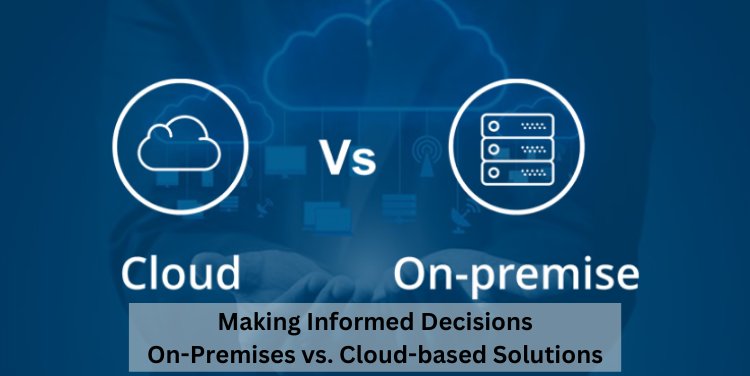Making Informed Decisions: On-Premises vs. Cloud-based Solutions

In today's ever-evolving technological landscape, businesses are faced with the crucial decision of selecting between on-premises and cloud-based solutions to meet their operational needs. Each option carries its own set of benefits and considerations, making it imperative for organizations to weigh their choices carefully. In this blog post, we will explore the key factors that influence this decision-making process.
1. Cost Efficiency:
On-Premises: Upfront costs include hardware, software licenses, and infrastructure setup. Long-term expenses may include maintenance, upgrades, and IT staff salaries.
Cloud-based: Typically involves a pay-as-you-go model, reducing upfront costs. Expenses are primarily operational, covering subscription fees and usage charges.
2. Scalability:
On-Premises: Scalability may be limited by hardware capacity and infrastructure constraints. Expansion often requires additional investment and time.
Cloud-based: Offers unparalleled scalability, allowing businesses to easily adjust resources based on demand. Scaling up or down can be done swiftly with minimal disruption.
3. Maintenance and Updates:
On-Premises: Requires dedicated IT staff for ongoing maintenance, updates, and troubleshooting. Software patches and security upgrades are managed internally.
Cloud-based: Maintenance, updates, and security patches are handled by the service provider. This alleviates the burden on internal IT teams, ensuring systems remain up-to-date and secure.
4. Security and Compliance:
On-Premises: Provides greater control over security measures and compliance protocols. Data is stored locally, which may offer peace of mind for organizations with stringent regulatory requirements.
Cloud-based: Security protocols are managed by the service provider, who invests heavily in state-of-the-art infrastructure and compliance certifications. However, concerns regarding data privacy and compliance may arise, especially in highly regulated industries.
5. Accessibility and Flexibility:
On-Premises: Accessibility is limited to on-site locations, potentially restricting remote work capabilities. Flexibility may be compromised, particularly during unforeseen circumstances such as natural disasters.
Cloud-based: Offers anytime, anywhere access to data and applications, empowering remote work and collaboration. Flexibility is enhanced, enabling seamless operations regardless of location or device.
Both on-premises and cloud-based solutions offer distinct advantages, and the optimal choice depends on the unique requirements and priorities of each organization. While on-premises solutions provide greater control and security for certain businesses, cloud-based solutions offer scalability, accessibility, and cost-efficiency. Ultimately, informed decision-making involves a thorough evaluation of factors such as cost, scalability, maintenance, security, and accessibility to align with business objectives and drive long-term success. By carefully assessing these considerations, businesses can confidently navigate the on-premises vs. cloud-based dilemma and leverage technology to propel their growth and innovation initiatives forward.
What's Your Reaction?















